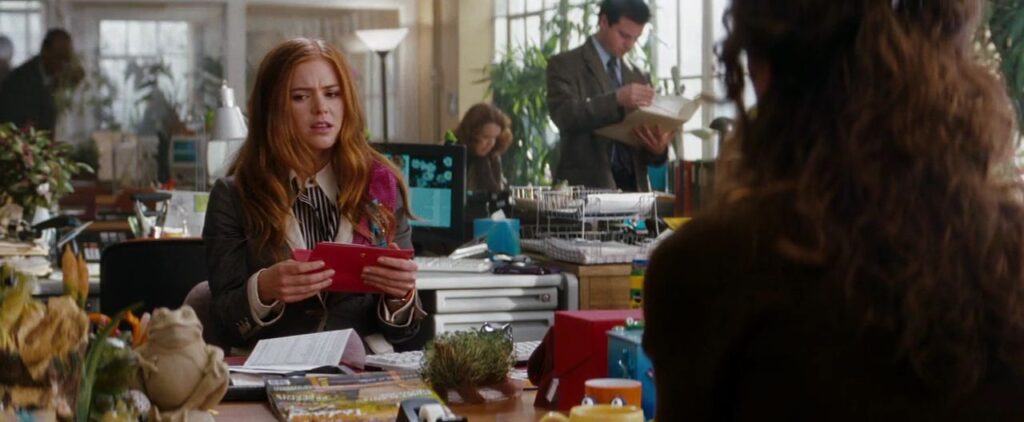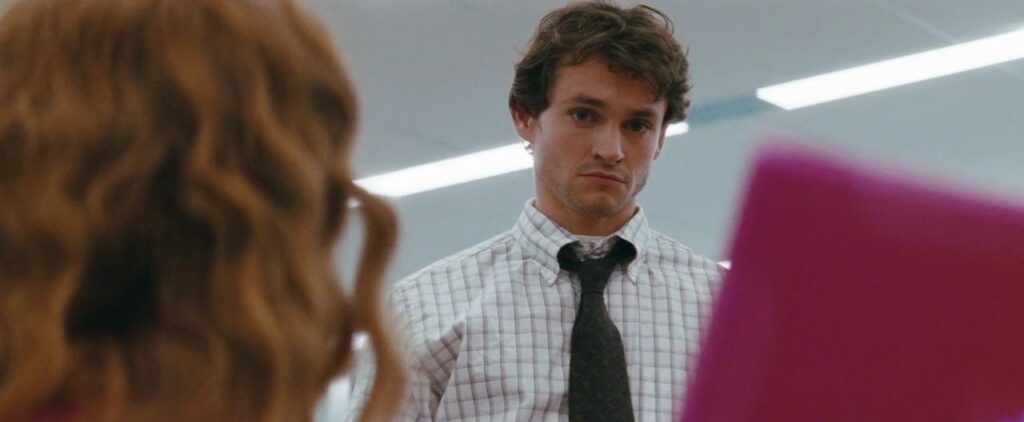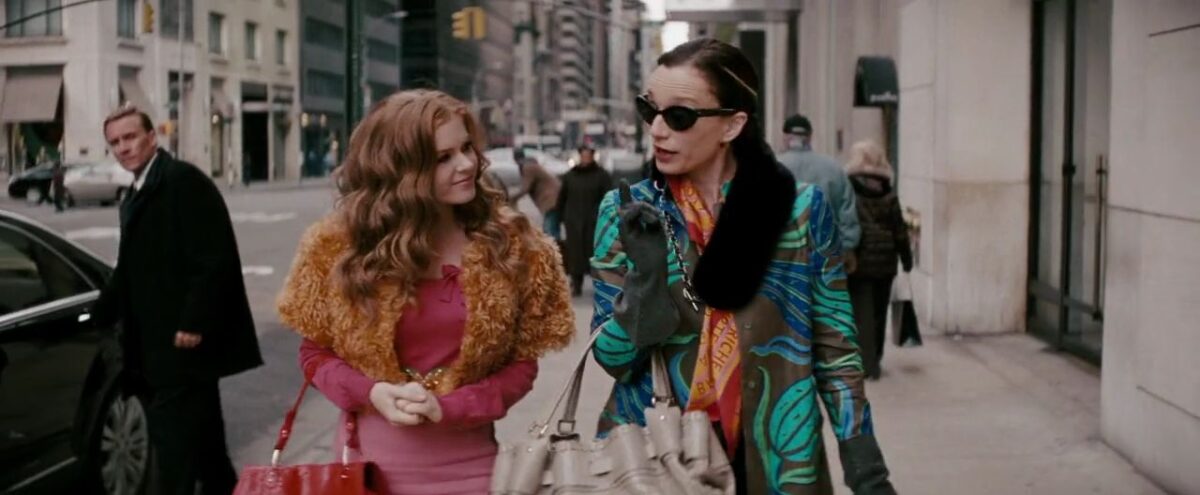I just can't live without shopahol!
On December 1, 2008, the National Bureau of Economic Research confirmed what everyone had known for months: the United States was in the middle of a recession. A few days earlier, Touchstone Pictures completed its reshoots of Confessions of a Shopaholic due to fears that its glitzy, consumerist romcom ending was not sufficiently sympathetic during a real-life financial catastrophe. John Goodman has a brief monologue near the end of the film about how those of us in debt must be resilient, just like the United States has been resilient — I assume this was part of the reshoots.
The result is, expectedly, a tonal whiplash. And yet I kind of love this about the film. It provides a messy snapshot of an American psyche totally dominated by certain headlines, much like The Terminal’s fascinating look at post-9/11 airport security and surveillance and xenophobia in 2004.
Rebecca Bloomwood (Isla Fisher), a shopping addict, luxuriates in her designer dresses, bags, and sweaters. When she passes a clothing store, the mannequins call out to her, charmingly rendered here as sentient, beckoning store fixtures. She is a writer at a gardening magazine who dreams of becoming a columnist for prestigious fashion magazine Alette (I guess it’s Vogue?). After her current gig folds, she tries to interview for a position at Alette, but is told that she has to start at the bottom of the rung: Successful Saving, a financial magazine. She gets her foot in that door by lying to its editor, Luke Brandon (Hugh Dancy). All pretty standard cosmopolitan romcom setup on the surface.

What makes the film strange is the parallel plot of a vicious credit collector Derek Smeath (Robert Stanton) pursuing Rebecca like a bounty hunter. Rebecca dodges him with the help of her best friend Suze (Krysten Ritter) who also offers support as Rebecca attempts break her shopping compulsion. As the title would suggest, Rebecca is totally addicted to capitalism. Retail shopping is her intoxicant. The film treats this problem with a bizarre half-seriousness. Sometimes it’s greeted with hushed whispers as if it is a death sentence, a serious condition threatening to spiral Rebecca’s life out of control; other times, it’s a charming little character quirk that everyone laughs about over glasses of wine. I suppose addiction and demons can really be like that in real life.
Rebecca unexpectedly thrives at Successful Saving under the pseudonym of “The Girl in the Green Scarf” by filtering financial commentary through the lens of her own ordinary-girl fashion obsession. She writes such borderline-meaningless aphorisms as: “Buy on sale!” “Don’t listen to those stuffed shirts; find a fit that works for you!” And yet her column becomes a sensation in both the business world and the broader culture. Successful Saving starts flying off the shelves because of Rebecca. And she and Luke start making goo-goo eyes at each other.
That Rebecca could excel as a financial writer shatters the film’s suspension of disbelief, but if you zoom out, it’s got some thematic meat on the bones, and enhances the sense that this film is a snapshot of a turning point in late capitalism. There are some fascinating ideas and contradictions that need wrangling here: Corporate honchos, the face of the recession, buy into Rebecca’s common-sense wisdom as they finally see the malpractice of their greedy capitalistic ways. But it’s more complicated than that, because Rebecca herself, the face of the people, is a hypocrite. She preaches financial prudence as she racks up credit card bills. She tries to dodge her consequences the same way that the big corporations do. A reckoning for both Rebecca and the entire system is in order. No mere magazine column of aphorism solves our woes.

In practice, this doesn’t quite click, but I was drawn in by the premise nonetheless, even as its tone takes a bizarrely dark nosedive in the closing half hour: Rebecca’s debt collector outs her on live TV; she’s promptly fired and treated by her peers and friends like she committed manslaughter rather than swiping a credit card a few too many times. It’s a cynical turn for a breezy film.
The film’s presentation is pretty shallow and shrill, but there’s a kooky energy to it. On a hunch, I wondered aloud to my wife halfway through: “Is this director Australian? There’s something weird here I can’t put my finger on.” Sure enough, P.J. Hogan (also of My Best Friend’s Wedding) is from Down Under. Fisher is an Aussie too, and she struggles the entire runtime to mask her accent and talk like a New Yorker.
Fisher, in general, is a bit of a liability, not quite charismatic or talented enough to put the film on her shoulders, but doing her damnedest nonetheless. She has manic energy and big expressive eyes, and that gets you pretty far. But the film’s signature physical comedy scene is a silly dance she does with Dancy, and I didn’t smile once, let alone laugh. I think Wedding Crashers is generally the best use for Fisher: a charge of hot, unpredictable energy in a supporting role.
I like most of the rest of the cast: Goodman is the MVP as Rebecca’s dad, underutilized but landing his three scenes. Joan Cusack plays Rebecca’s mom, and she’s predictably good, too. Throw in some John Lithgow, Kristin Scott Thomas, and Julie Hagerty action, each delivering overqualified turns in small supporting roles. Ritter has trouble modulating her performance as the best friend, but her two dramatic beats — getting angry at Rebecca at the third act turn, then forgiving her in the climax — she nails.

On the downside, my semi-rational grudge against Fred Armisen continues in an annoying minor role. More problematic overall is the co-lead: Dancy is exactly replacement level, not degrading his unchallenging material but certainly not elevating it. He’s very much “we’ve got Hugh Grant at home” here.
The fashion, so central a topic, is delectably over-the-top and of-its-era, with a few gorgeous outfits contrasted against some outrageously ugly combos that I simply could not believe tastemakers would ever find attractive. But then I suppose every era has its own looks and trends that age poorly. Still, Mrs. Harris Goes to Paris does a lot better in representing fashion as a classy, timeless art with its beautiful gowns.
The parts that Confessions of a Shopaholic are made up of are pretty lousy, and yet it is more than the sum of those parts. I can’t really recommend it — in a vacuum, it’s closer to “bad” then “good” — yet it is fascinating for time capsule and tonal trainwreck reasons. When my head and my heart give two different ratings, I always go with the heart, so you’ll probably want to bump what you see below down a notch, maybe two, for your own expectations.
Is It Good?
Nearly Good (4/8)
Dan is the founder and head critic of The Goods. Follow Dan on Letterboxd. Join the Discord for updates and discussion.


One reply on “Confessions of a Shopaholic (2009)”
My first impression of this film was “Joan Cusack is NOT old enough to be Isla Fisher’s mum!” and I’m slightly relieved that hard facts vindicate that particular reaction (Big sister, yes, but not her mother).
My only other response is that, whether or not it was a deliberate choice or an accident of fashion history, having our Shopaholic movie showcase a mix of “Would absolutely wear that” and “What were they thinking?!?” works beautifully to emphasise that this is a film about a character whose judgement is not very trustworthy.
…
Also, I’m now wondering if a SHOPAHOLIC remake made with the benefit of hindsight might be well worth the price of transmission.